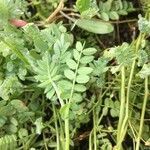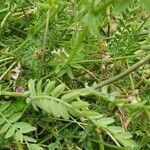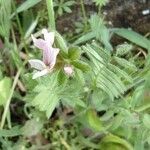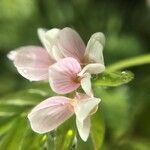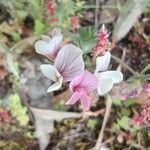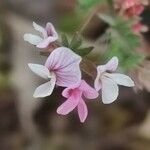Erect or ascending, pubescent annual 2–7 dm; lvs 4–7 cm; lfls 9–18 pairs, 4–8 mm; peduncles 2–4 cm, from the upper axils; heads 2–6-fld, subtended by a pinnate leafy bract; fls white or pink, 5–9 mm; fr with 3–5 strongly nerved oval joints each 3–4 mm, the terminal one beaked; 2n=14. Native of the Mediterranean region, established on Long Island. June–Aug.
